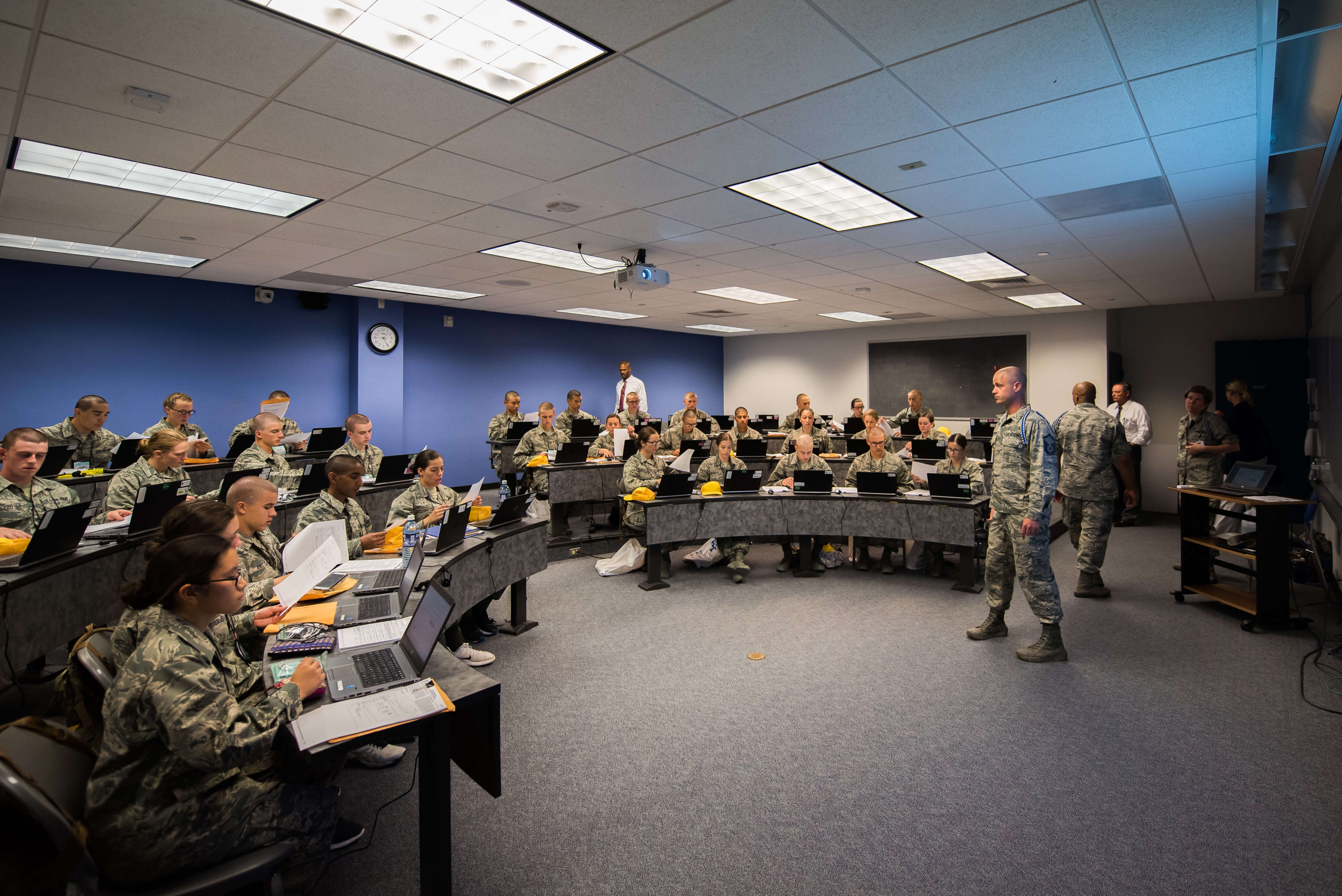Defense Digital Service team visits Academy to observe security clearance processes

(Photo/Trevor Cokley)
By Jennifer Spradlin, July 6, 2019
U.S. AIR FORCE ACADEMY, Colo. — The Defense Digital Service team visited the Academy last week to observe how new cadets completed an electronic questionnaire necessary to attain security clearances.
The team’s goal: eliminate redundancies across multiple agencies and build a new software prototype to improve the user experience.
“We have a 1-to-2 percent margin of error in our applications, which is pretty phenomenal for this kind of effort,” said Dr. Gayle Blue-Keyes, Academy director of information protection.
Each summer, more than 1,000 new cadets fill out the 50 page Electronic Questionnaires for Investigation Processing form in structured sessions with cadre support.
“Structured sessions dramatically reduce investigation errors while directly communicating to the new cadets the importance of trustworthiness, reliability and loyalty, the same traits needed in the development of leaders of character,” said Jessie Rhom, Academy personnel security program manager.
The department will have open investigations filed for each cadet by the time they march back from training in Jacks Valley some six weeks later.
“As a bright spot for the National Background Investigation Bureau, DDS is here to see which processes can be used government-wide and make recommendations on how we could improve our program,” Blue-Keyes said. “Through observation, they can see which questions are most confusing for our cadets and where plain language, for example, might improve their understanding.”
The motto for the DDS is to design with users rather than for them. The System for Automated Background Evaluation Review (SABER) team has visited multiple agencies and military installations to collect firsthand information from applicants and program managers. The Academy is providing a rare opportunity for DDS to observe a high volume of “end-users” filling out the paperwork.
“There has been a disconnect between the policymakers, software makers in government and the users themselves, and the security clearance process very clearly illustrates that,” said Patrick Stoddart, SABER program manager. “The security clearance process and the background investigation process has largely remained unchanged since the 1970s, but the way that we live and work today has.”
SABER is a partnership with the Office of the Under Secretary of Defense for Intelligence and the Defense Counterintelligence and Security Agency. With the imminent transfer of the background investigation mission from OPM to DoD, DCSA is exploring ways to deliver more accurate vetting results while eliminating the existing two-year backlog of cases.
Stoddart said the team would like to maximize computer capabilities for data processing and automated records checks and empower human employees in the process to focus on asking the nuanced questions that will ensure the caliber of the applicants match the important positions in government being applied to.
Ultimately, the project has the potential to greatly affect national security as the team looks to reduce the waiting time from a top security clearance from 12-18 months to less than one.
“High-quality candidates, those who are critical for national security positions, for areas like cyber security, they’re the most in-demand people, and the people the government needs to compete for,” Stoddart said. “The background investigations process has a huge impact on whether the government can bring on board the A-Team level talent it needs to be successful.”
The Defense Digital Service was established by Secretary Ash Carter in January 2016 as a DoD agency team of the United States Digital Service. DDS recruits top technologists for term-limited tours of duty to help build better services and solutions. DDS’s mission is to drive a giant leap forward in the way the Department of Defense builds, buys and deploys software.